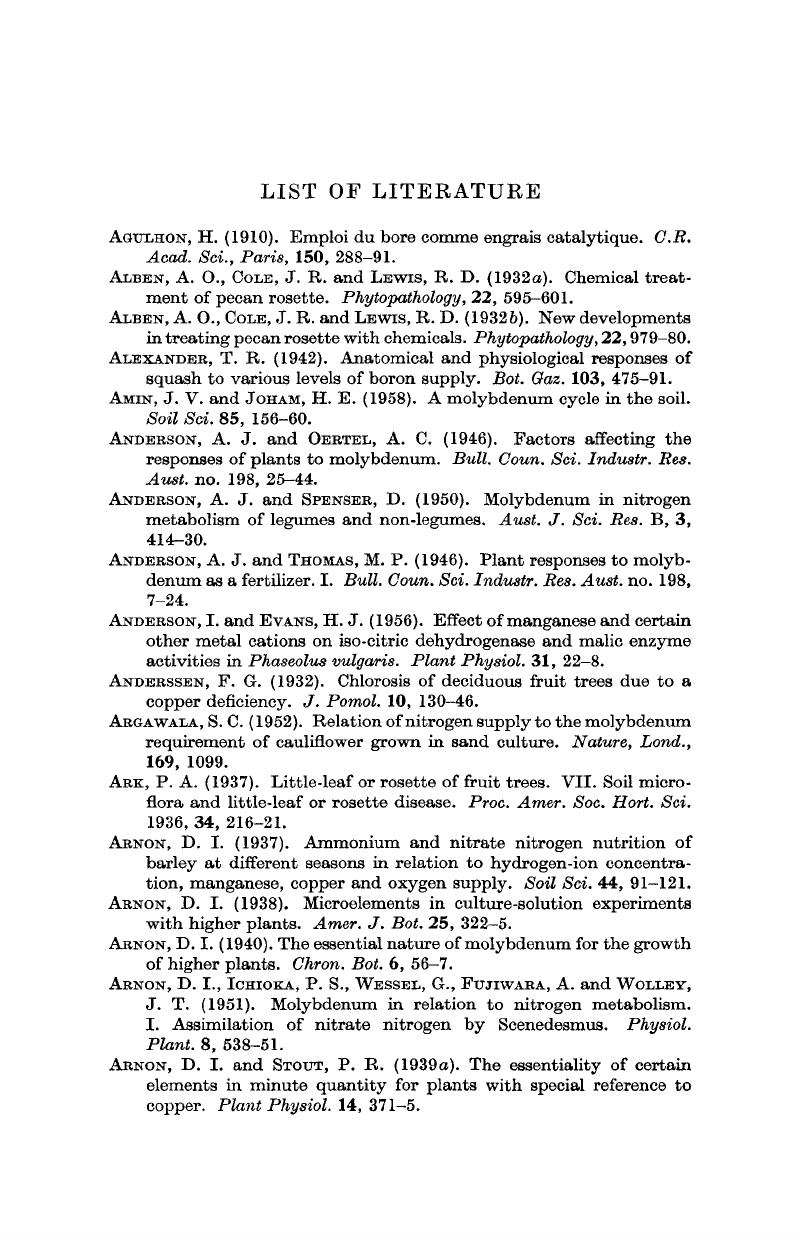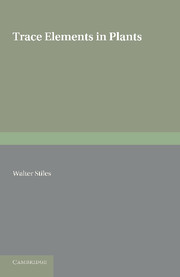Book contents
- Frontmatter
- Dedication
- Contents
- Preface
- Preface, to the First Edition
- List of Plates
- List of Abbreviations
- I HISTOBICAL INTRODUCTION
- II METHODS OF INVESTIGATING MICRO-NUTRIENT PROBLEMS
- III TRACE-ELEMENT DEFICIENCY DISEASES OF PLANTS
- IV THE EFFECTS ON PLANTS OF TRACE-ELEMENT EXCESS
- V FACTORS INFLUENCING THE ABSORPTION OF TRACE ELEMENTS AND THEIR EFFECTS ON PLANTS
- VI THE FUNCTIONS OF TRACE ELEMENTS IN PLANTS
- VII TRACE ELEMENTS IN PLANTS IN RELATION TO SOME DISEASES OF GRAZING ANIMALS
- VIII CONCLUDING REMARKS
- List of Literature
- Index
- References
- Frontmatter
- Dedication
- Contents
- Preface
- Preface, to the First Edition
- List of Plates
- List of Abbreviations
- I HISTOBICAL INTRODUCTION
- II METHODS OF INVESTIGATING MICRO-NUTRIENT PROBLEMS
- III TRACE-ELEMENT DEFICIENCY DISEASES OF PLANTS
- IV THE EFFECTS ON PLANTS OF TRACE-ELEMENT EXCESS
- V FACTORS INFLUENCING THE ABSORPTION OF TRACE ELEMENTS AND THEIR EFFECTS ON PLANTS
- VI THE FUNCTIONS OF TRACE ELEMENTS IN PLANTS
- VII TRACE ELEMENTS IN PLANTS IN RELATION TO SOME DISEASES OF GRAZING ANIMALS
- VIII CONCLUDING REMARKS
- List of Literature
- Index
- References
Summary

- Type
- Chapter
- Information
- Trace Elements in Plants , pp. 199 - 230Publisher: Cambridge University PressPrint publication year: 2013



